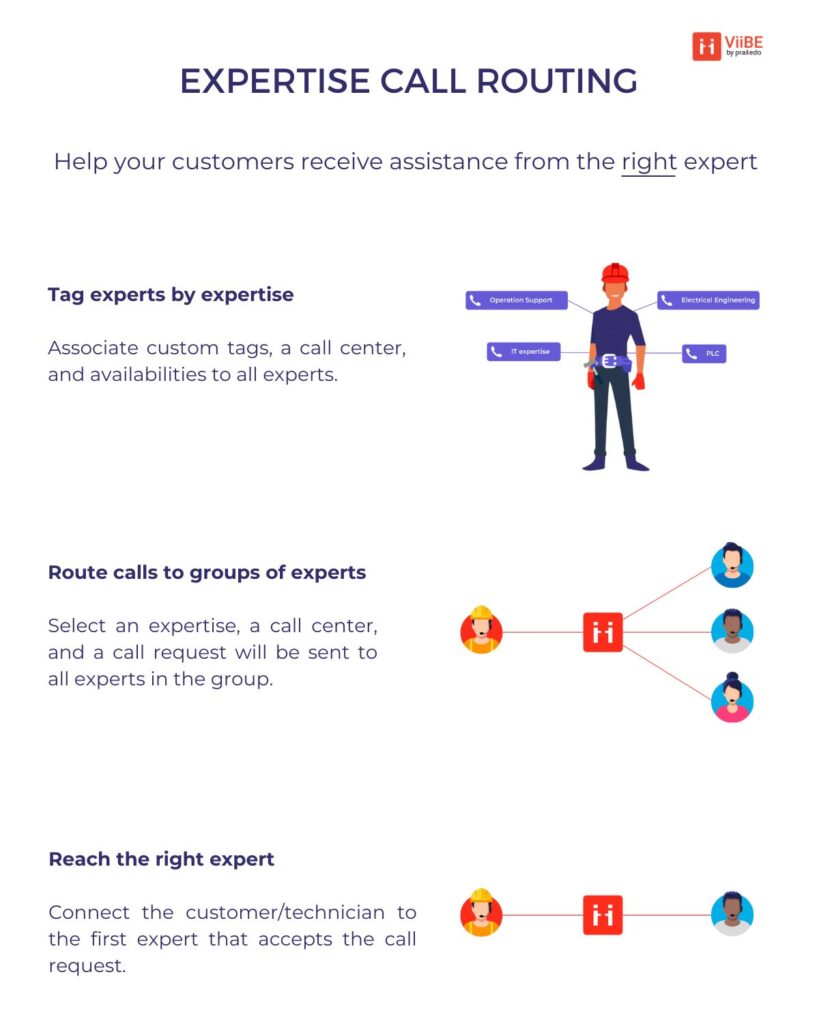Sometimes knowing who to contact in case of a problem is already 50% of a resolution process. That is why expertise location is so important. It is impossible to know everything, yet being able to find a person who has the knowledge you lack in the particular question can be a determining factor on the way to success. This article will explain the definition of expertise location and how its principles can be adapted to after-sales and technical support.
By the end of it, you will be able to understand how expertise location can facilitate troubleshooting, decrease downtime, increase customer satisfaction, and strengthen customer loyalty.
1. What is expertise location and where is it used?
Expertise location is a knowledge management approach used in different practices. Thanks to it, employees can connect to knowledgeable colleagues in the company in case of a problem. Usually, it is up to an organization to decide how it will structure its expertise. The key is to make it accessible and efficient. For example, some companies choose to organize expertise groups. Or, if it is a big enterprise, there can be a database of experts that employees can search in case they need assistance.
The criteria used to create and differentiate those experts are flexible matter. In some cases, employees fill out the information about their skills and expertise in the database. In other situations, there is a dedicated person in the company responsible for expertise attribution.
The digital tools that are used include yellow page systems and expertise locator solutions. However, the data need to be entered manually which can be a daunting task. Besides, codifying expertise is not so easy. If employees do it on their own, they tend to overexaggerate their competencies. And not so many companies are ready to allocate additional resources for algorithmic analysis of resumes.
What do after-sales and technical support have to do with the expertise location? Indeed, so far we have covered the corporate application of it. However, the expertise location is the founding block of every support department. Let’s delve into it.
2. Expertise location in after-sales and technical support
Every company wishes to address its customers’ queries in a fast and efficient manner, so the customer would continue to benefit from the product or service and recommend it to other users. Therefore, it is essential to understand the type of problems the client may run into, what tools he/she can use to troubleshoot, and how to connect him/her to the right expert.
What kind of professional is “the right expert”?
When composing your customer support team, you must understand the profile of each member. Based on their level of expertise, you will be able to understand how many levels of support the customer will need, what each level will be responsible for, what tools will be required, and how to connect these levels together.
Consequently, the need for a digital solution that could facilitate this process arises.
Remote visual support solutions are the right fit for it. When setting up your company’s organization, you will deal with “call centers” and “expertise” categories. A call center in the visual support solution is a virtual unit that will consist of your experts. Some companies choose to set them based on geographic locations or assign them the names of the assets. There is no limit to the number of allowed call centers. Remote visual support solutions can accommodate your needs even when you are scaling and more experts are required.
Once call centers are created, you will be able to add the users. Remote visual support solutions like ViiBE offer several types of roles that imply different access rights. This ensures data security and that no unauthorized access can be gained.
Each expert needs to be assigned to the expertise. It can be tied to a particular piece of equipment or type of query. This step is crucial because it will determine who will handle the query once the customer requests assistance. Thanks to such a call routing system, the downtime will significantly decrease because your clients will be able to get connected to the right professional who will gain 360° visibility of the problem and provide qualified assistance.
Remote visual support offers excellent flexibility to support agents. Suppose, a customer contacted the virtual call center on your ViiBE instance without defining particular expertise. This means that all your experts associated with this call center will receive the notification on their desktop and the one who is available will answer it.

3. Enhancing knowledge management with expertise location
At the end of every video call session, the expert will be able to access its archive with the video recording, all the shared files, chat conversations, and customer feedback. The expert can tag the files in accordance with your company’s defined practices for easier navigation and better accessibility of these files by other team members. Such archives are an immense source of useful information on problem resolutions, best practices, and expert guidance. Team members can pinpoint particular moments in the video recordings and tag them with labels or comments. This will leave you with ready-made tutorials for handling after-sales or technical issues.
Such a knowledge repository can save the company significant resources that could have been spent on training. Moreover, successfully handled problems can serve as case studies for the marketing and branding purposes of your company.
4. Conclusion
Remote visual support solutions use the principle of expertise location to provide companies with a tool that can connect the right support experts with customers that need assistance. In this case, customers do not need to know who to contact, once you set up virtual call centers and define your agent’s expertise, the call routing system will do the magic. As a result, it will:
→ bring proximity of expert support to your customers
→ streamline the process of handling customer queries
→ decrease unnecessary displacement
→ increase first-call resolution rate
→ facilitate collaboration among experts on support teams
→ help create a strong knowledge management system
→ increase customer satisfaction
In a world where customers expect the same level of quality of remote support as they would receive it in real-time, visual support solutions have become go-to solutions helping companies improve their after-sales and technical support.

